Ceramic tile is available in a variety of shapes to help you achieve an impressive, one-of-a-kind design. Use just one tile shape, combine different shapes, or arrange the shapes to create specific floor tile patterns — anything is possible! Explore some popular tile shapes below to get started.
Circle Tile & Penny Round Tile
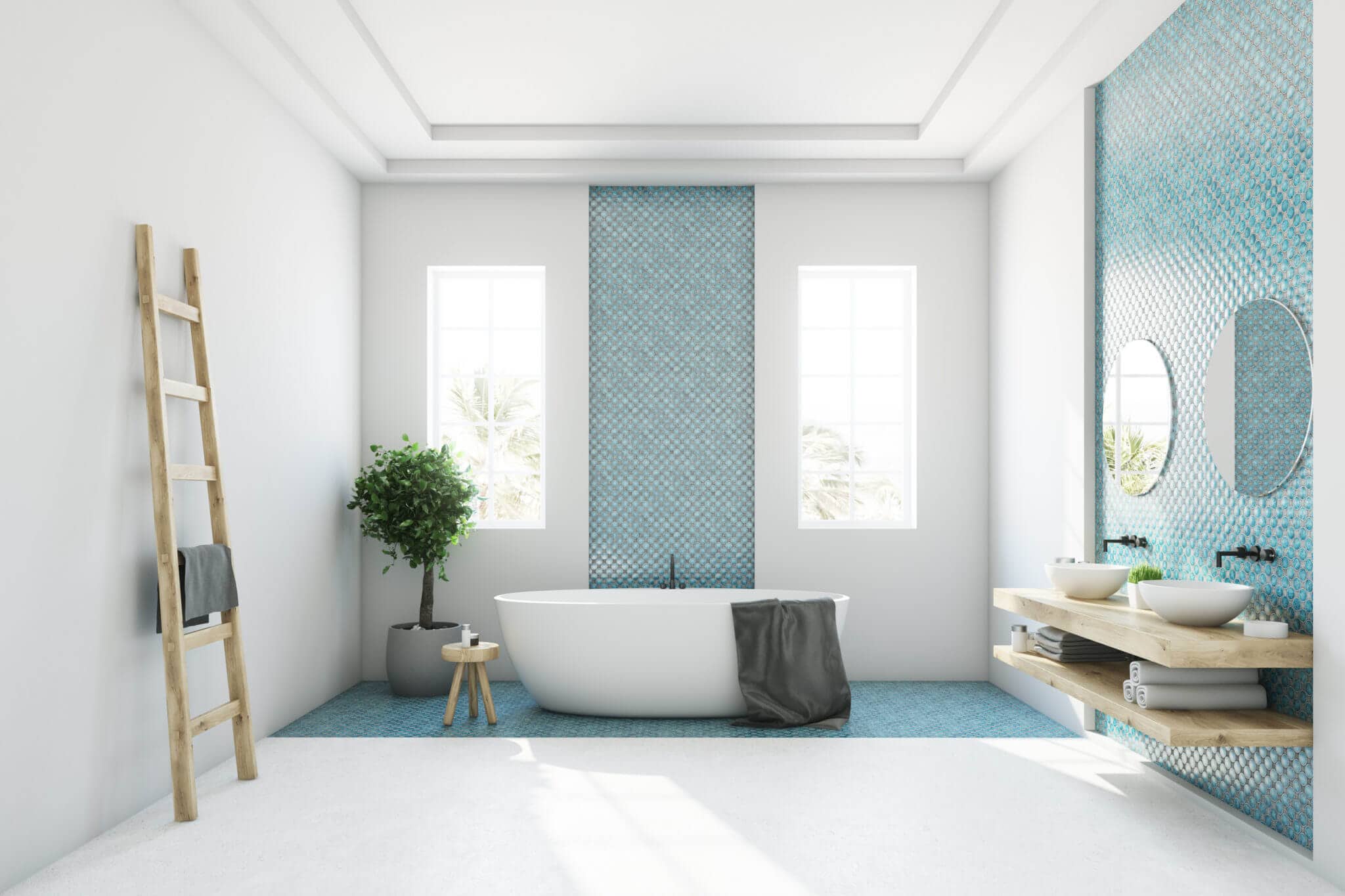
Simple yet unique, circular tile lends itself to many applications. Penny round tile has been a favorite since the Victorian era and generally refers to mosaics of small (penny-sized) circular tiles. However, circle tile comes in all sizes (and colors and textures), from iridescent penny round tiles in the shower to large matte circle tile flooring.
Triangle Tile
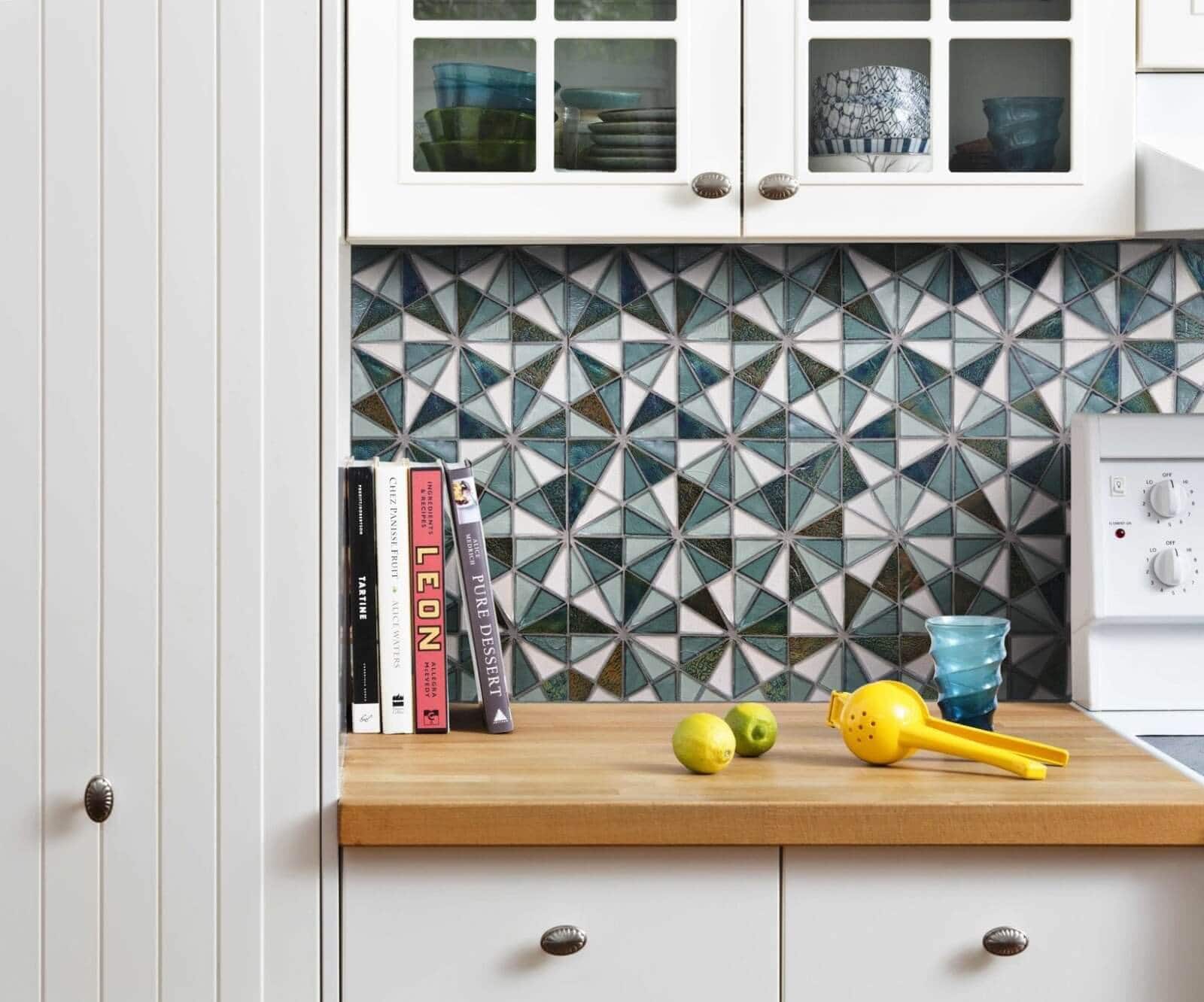
Who knew triangles could be so versatile? With just three sides/points, triangle tile makes a multitude of designs possible: Stack them right side-up and upside down, stagger them for an unfinished style, or arrange them to create other shapes, such as hexagons (see the photo above) or squares. Changing up the colors of triangle tiles in an installation allows you to create a distinctive geometric pattern.
While equilateral triangle tiles are most common, you can also choose from right triangles, obtuse triangles, acute triangles… we won’t give you a full geometry lesson, but you get the point!
Fish Scale Tile
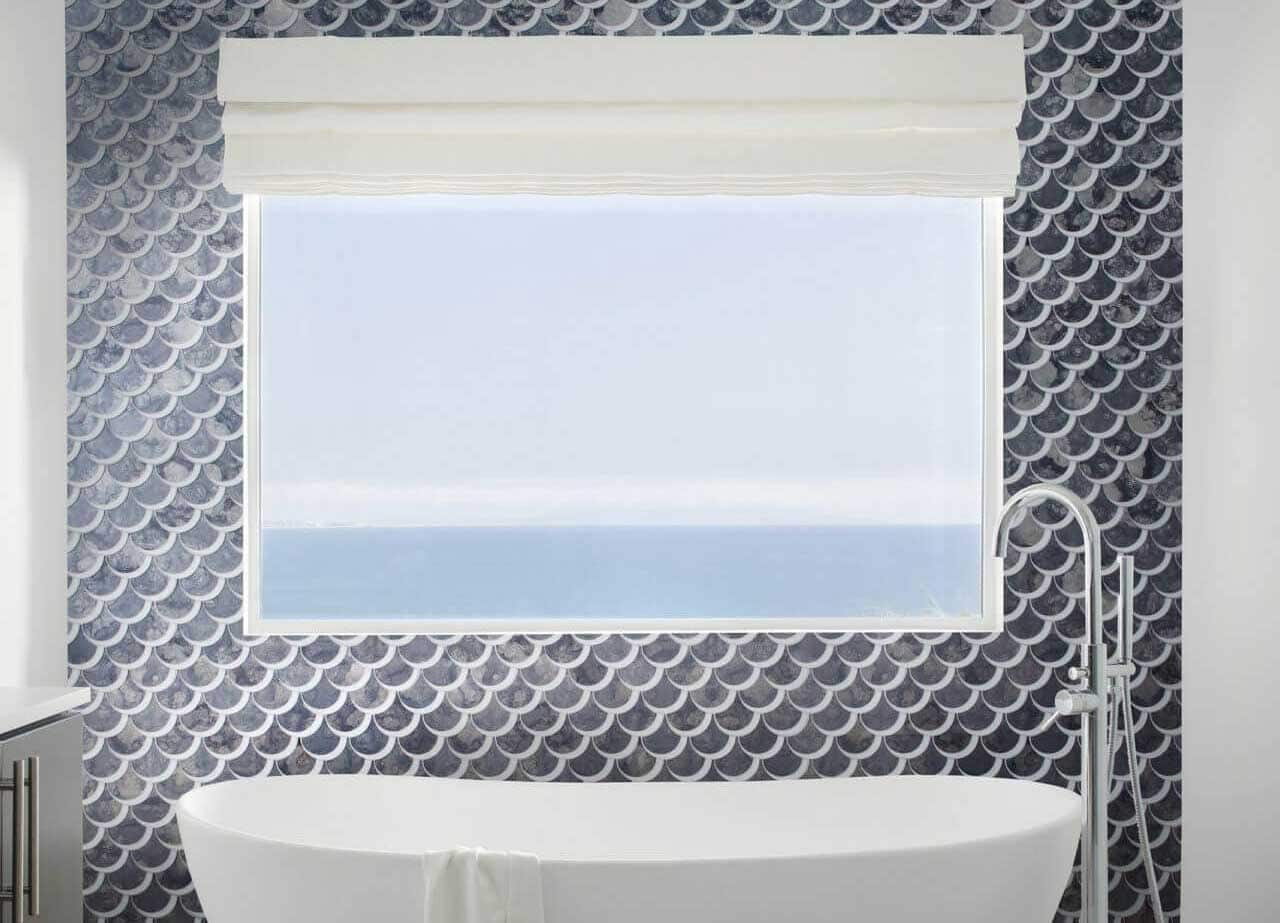
Also referred to as mermaid tile or scalloped tile, fish scale tile offers an aquatic shape perfect for coastal and beachy interior decor. While the repetitive curves of fish scale tile are calming, the shape’s unique pattern creates a playful vibe.
Fish scale tile can be arranged facing down for a mermaid scale effect, up for a sunrise effect, to the left or right, diagonally, or in a way that creates soothing curvy lines. Consider transitioning from tile to wall along the tile’s natural shape to draw attention to the unique pattern. While many designs opt for blue, green, and iridescent colors to promote the coastal look, fish scale tile pairs well with any hue.
Square Tile
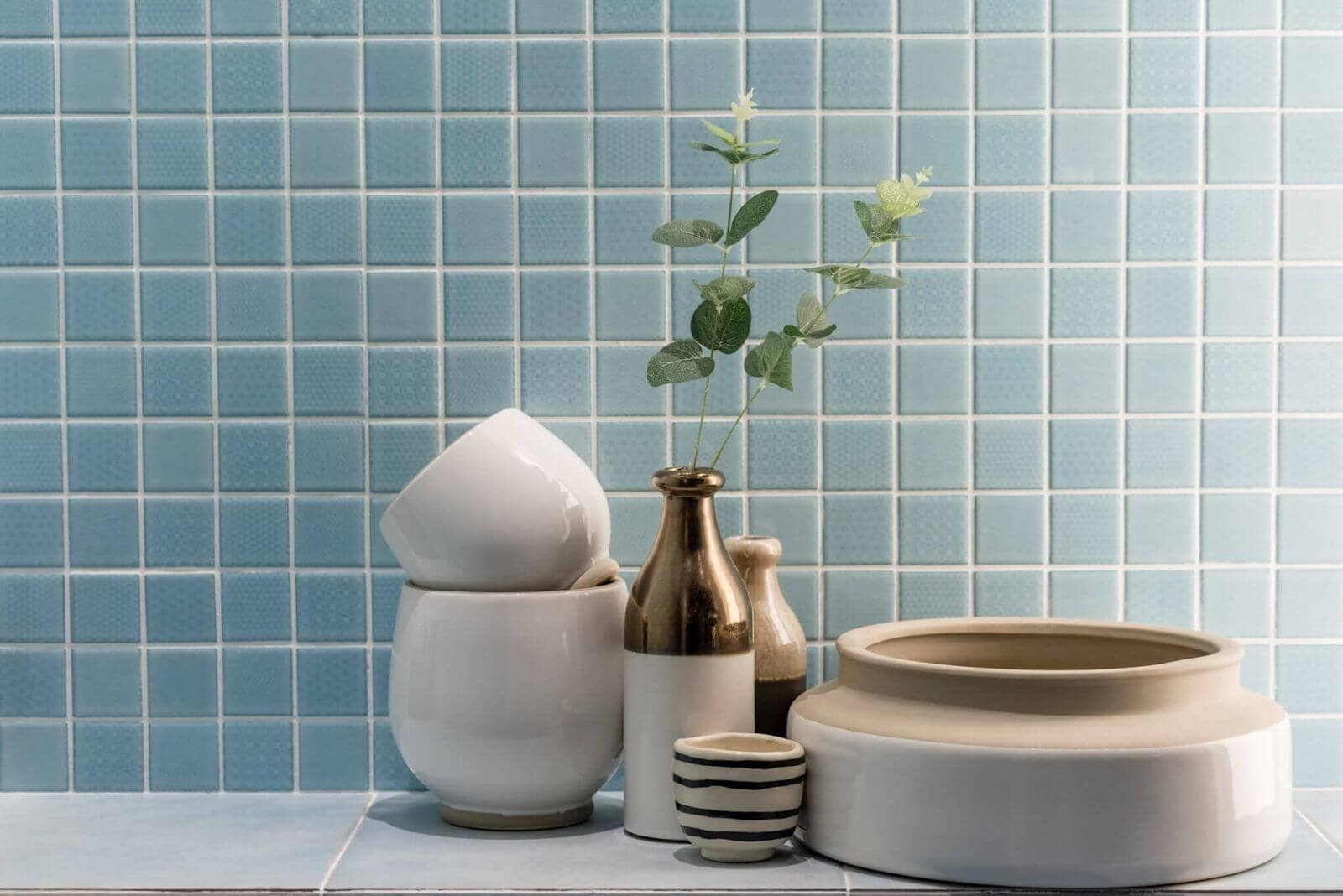
Going with square tiles certainly doesn’t mean being square — square tiles offer everything from the refreshing look of a classic grid to limitless creative variations.
For a simple twist on the classic grid, consider alternating your tile colors for a checkerboard pattern or laying your tile at a 45-degree angle so that the squares look like diamonds — or both. Square tiles also figure prominently in many popular tile patterns, including the hopscotch, corridor, and windmill patterns. Of course, you can also play around with tile colors, textures, and designs to add creativity to any square tile installation.
Rectangle Tile
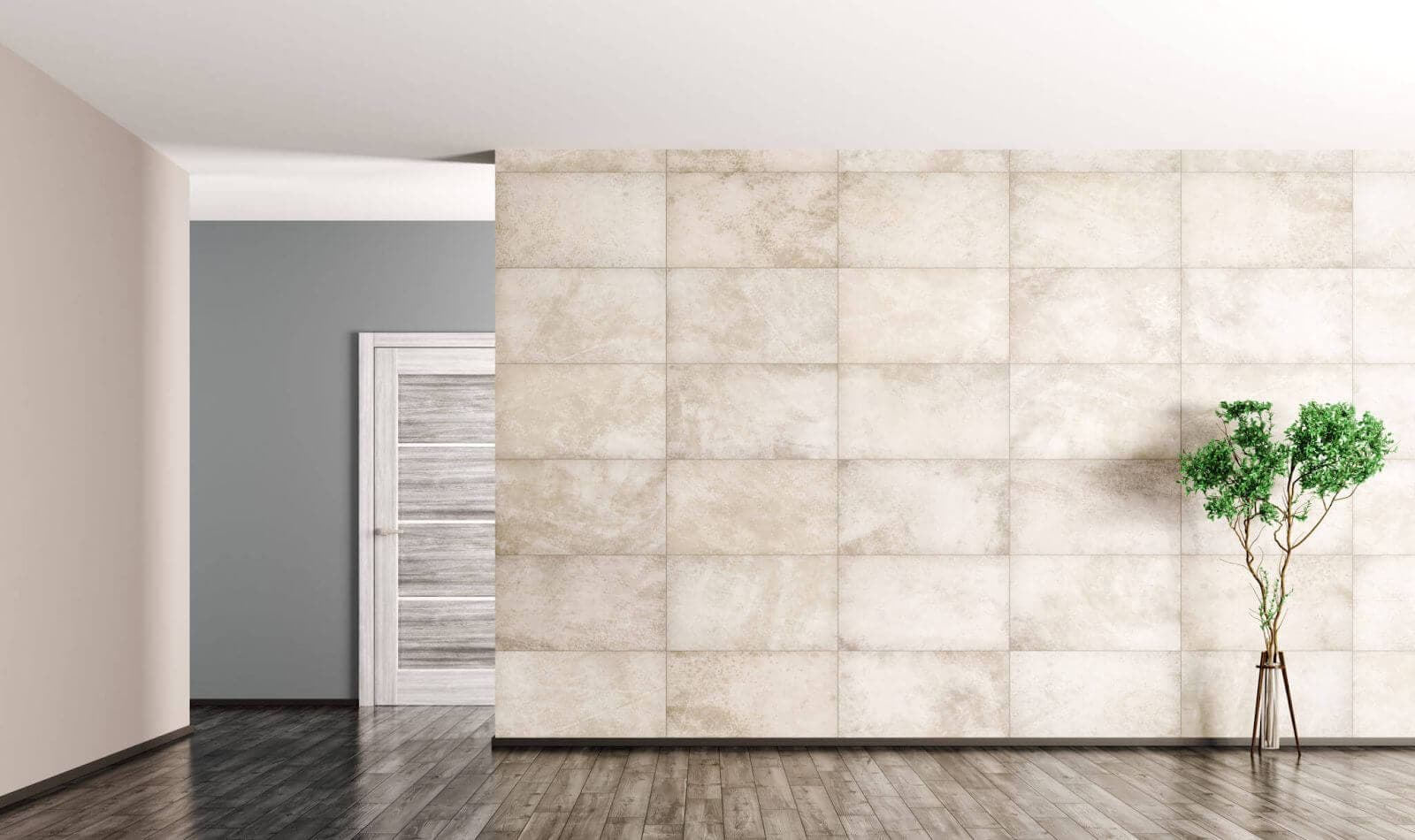
Rectangle tiles are a staple for many tile designs. In their simplest form, rectangles can be laid vertically or horizontally — an important choice that can help visually widen or lengthen a space and direct your line of sight in a specific direction.
You can also offset rectangle tiles to create staggered patterns such as the ever-popular subway tile (usually offset by 50%) or the running bond pattern generally associated with wood-look flooring (often offset by 30% or in an irregular offset). Lay rectangular tiles at 90 degrees to each other to create the herringbone tile pattern, or surround a square with rectangle tiles to create the windmill tile pattern.
Trapezoid Tile
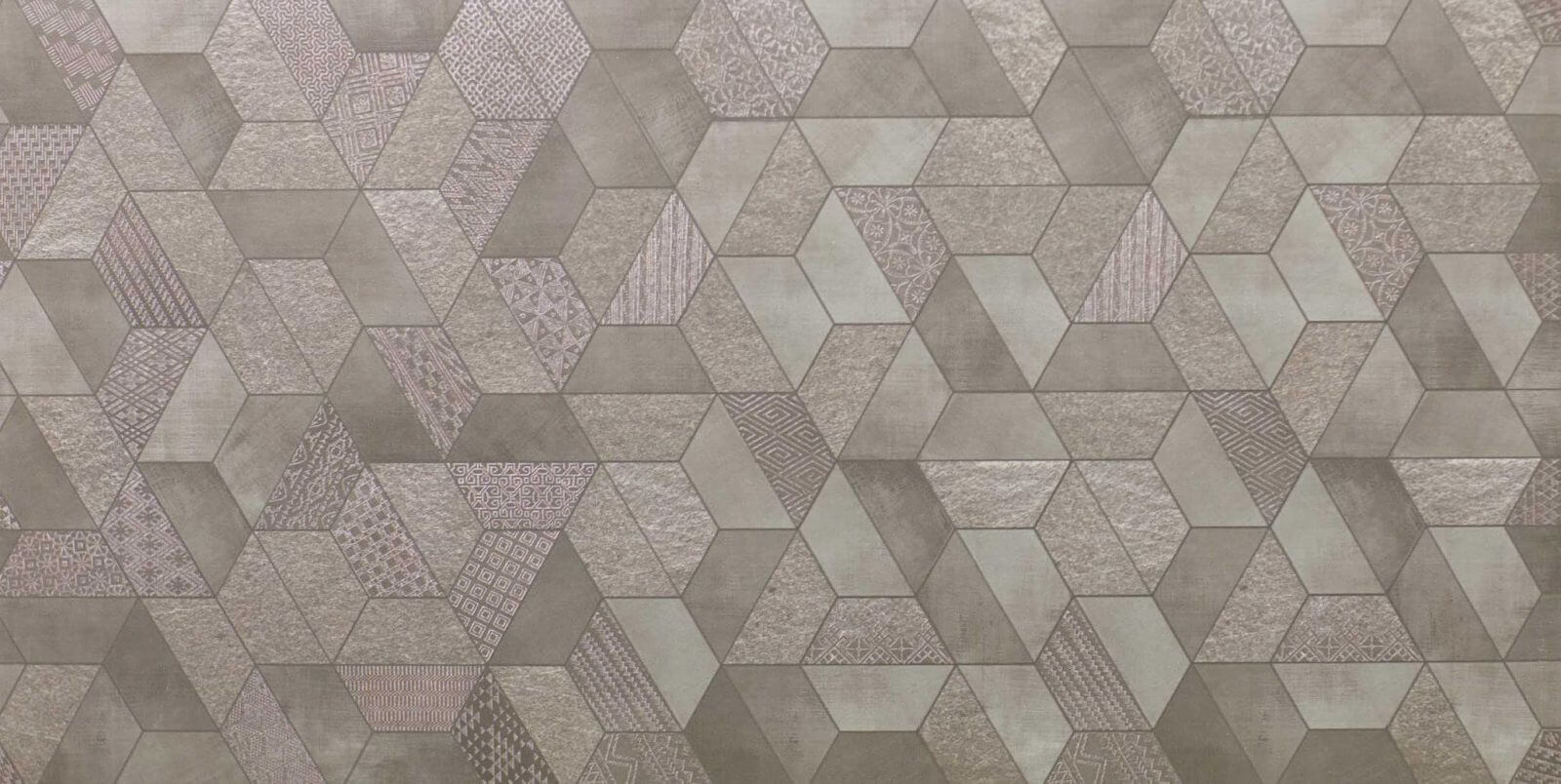
Not a shape you see every day, trapezoids are nevertheless right at home in tile installations. Stack trapezoid tiles, stagger them, or put them long side to long side to create hexagons. You can also play around with the trapezoid shape itself by using multiples of the same color, texture, or pattern to make longer trapezoids or arrange them at right angles to each other — whatever works best for your tile design and brings you to your happy place. Trapezoids have lovely potential to create “quilt” patterns and 3D looks with your tiles.
Diamond Tile
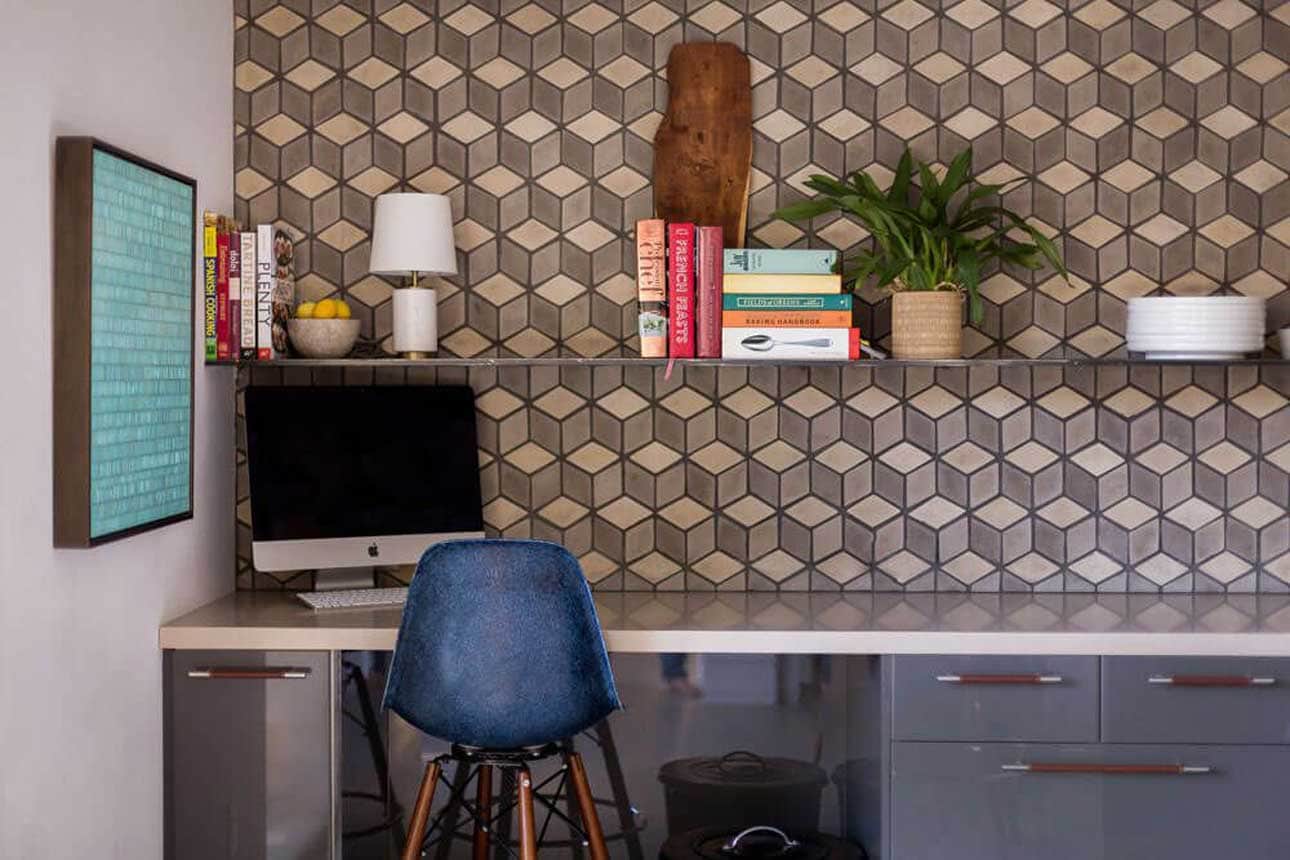
Ceramic + diamonds — what a power couple! After all, they say diamonds are forever, and ceramic tile has certainly proven long-lasting durability, as well.
Also referred to as rhombus tile, diamond tiles present a lot of room for creativity in terms of layout: Lay them vertically or horizontally, stagger them, or create the look of stars, three-dimensional cubes, or arrowheads.
Note: Be careful not to confuse diamond tiles with square tiles laid in a diamond pattern — just remember that unlike square tiles, diamond tiles don’t have four equal angles.
Kite Tile
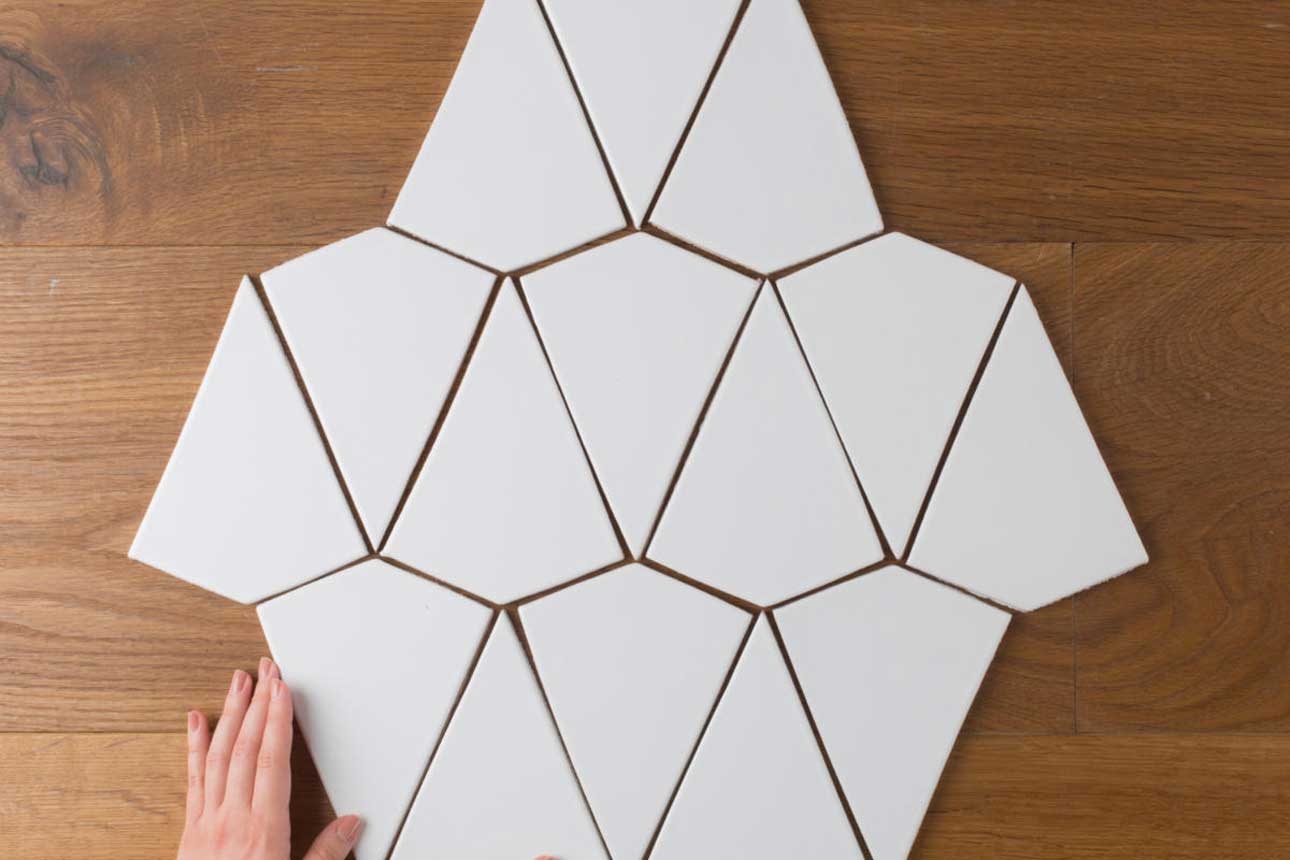
Reminiscent of both the triangle and the diamond shape, kite tile has a playful silhouette that you don’t see everyday (at least not indoors!). You can treat this shape much as you would hexagon tile, diamond tile, or triangle tile and play around with the tile layout and colors. Monochromatic palettes lend a graphic feel, whereas a multicolored design can create a kaleidoscope-like effect.
Pentagon Tile
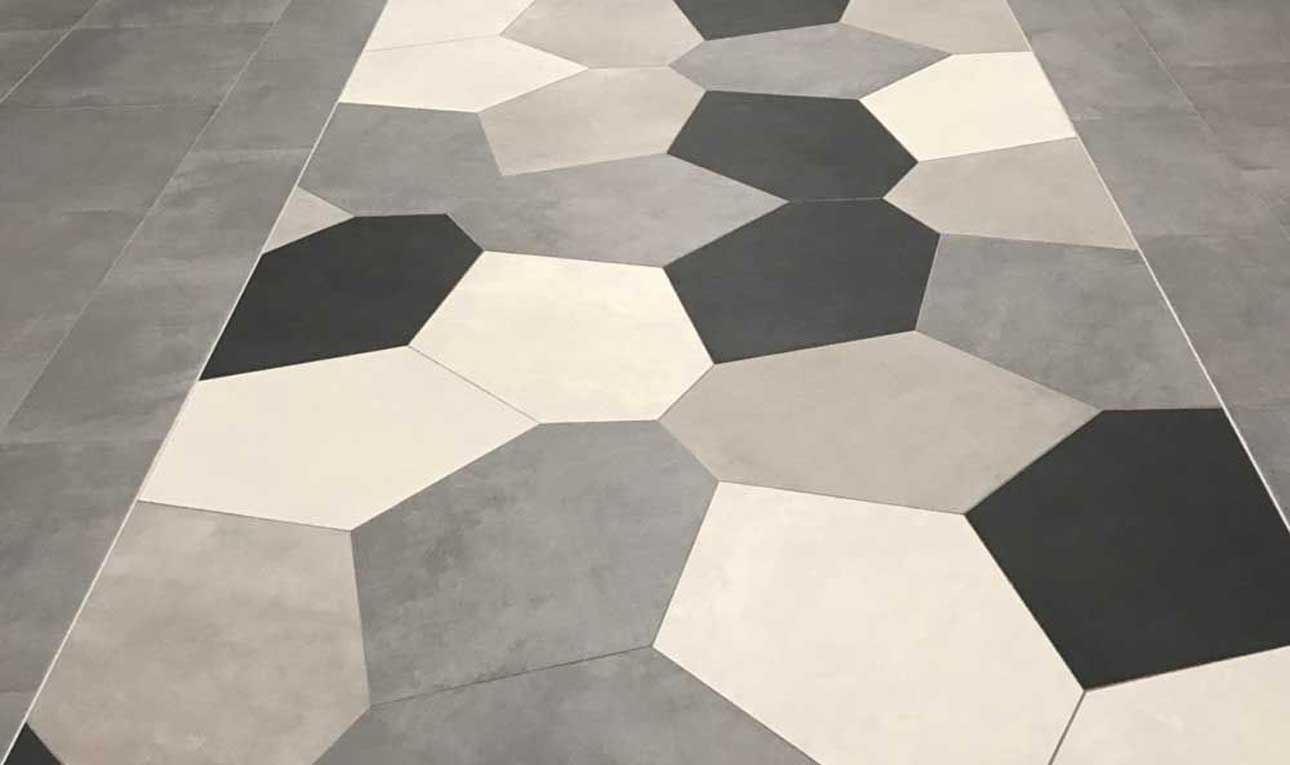
What has five sides and creates a singular look in any space? Pentagon tile. Whether you go with a regular pentagon shape with five equal sides and angles or an irregular shape like the one above, your tile design will be anything but ordinary.
While pentagon shapes work for both larger-scale tiles and mosaics, stick with larger tiles for larger spaces and mosaics for smaller applications (such as backsplashes or showers) to avoid creating a look that’s too “busy.”
Hexagon Tile
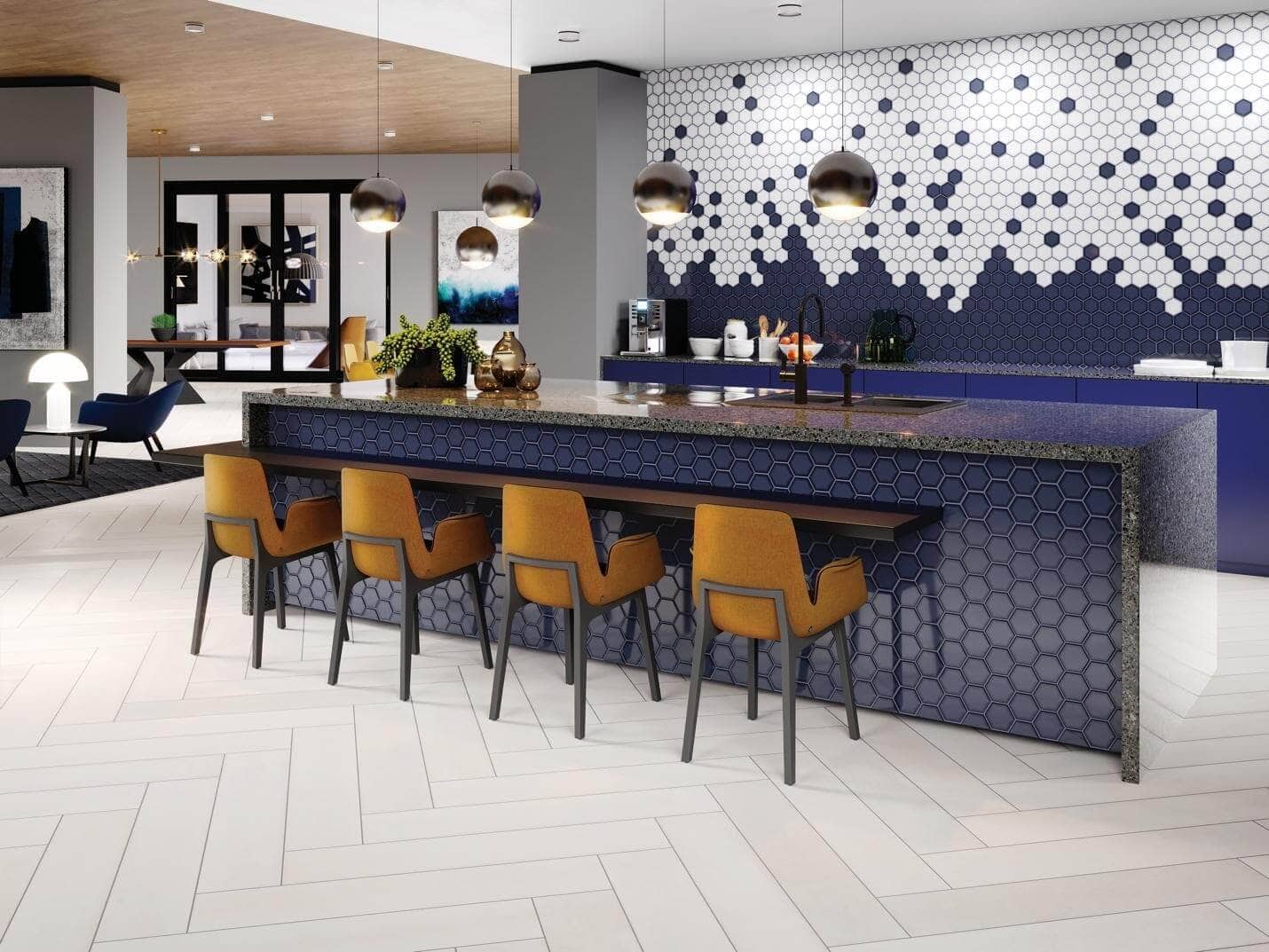
Hexagon tiles are a time-honored favorite, and it’s no wonder why. Hexagons always make a unique impact and lend themselves to a wide range of styles. Go with a white hexagon mosaic for a vintage feel, or experiment with modern trends such as ombre, staggered, or playful colors that draw attention to the hexagon’s honeycomb shape.
The hexagon shape can also be morphed to create what’s known as picket fence tile — who knew that the design in your front yard could look just as good on your backsplash!
Arabesque Tile
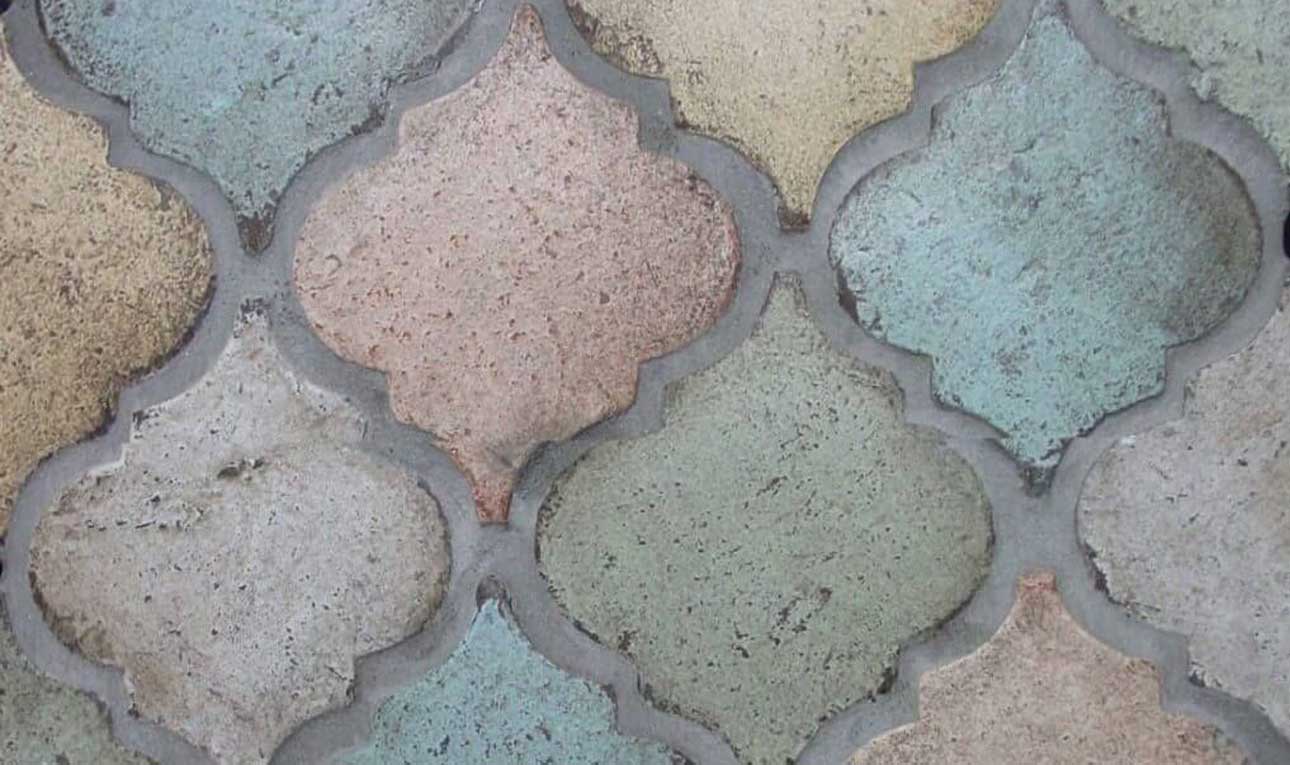
An unconventional lantern shape that traces its origins to Islamic design, arabesque tile can turn any application into a work of art. The arabesque’s symmetrical shape creates a stylized interlocking pattern that works well for a statement look, such as a feature wall or backsplash.
Note: Be careful not to confuse the arabesque tile shape with arabesque designs (rhythmic vegetal and geometric patterns), which are related and are also used to decorate tiles.
Looking for more tile design help? Download our Ceramic Tile Layout Pattern Guide to see how these tile shapes fit into some of the most popular tile patterns, then visit our Design Gallery and Pinterest boards for additional tile inspiration.
Where to Buy Tile
Use the search tool at the Ceramic Tile Distributors Association (CTDA) to find a ceramic tile showroom in your area for a more individual, one-on-one shopping, design and education experience, or visit a home improvement or flooring retailer.
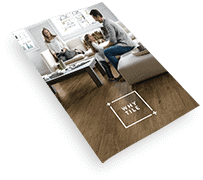
Download #OutsideTheBox: Your Tile Buying Guide…and get started now!
